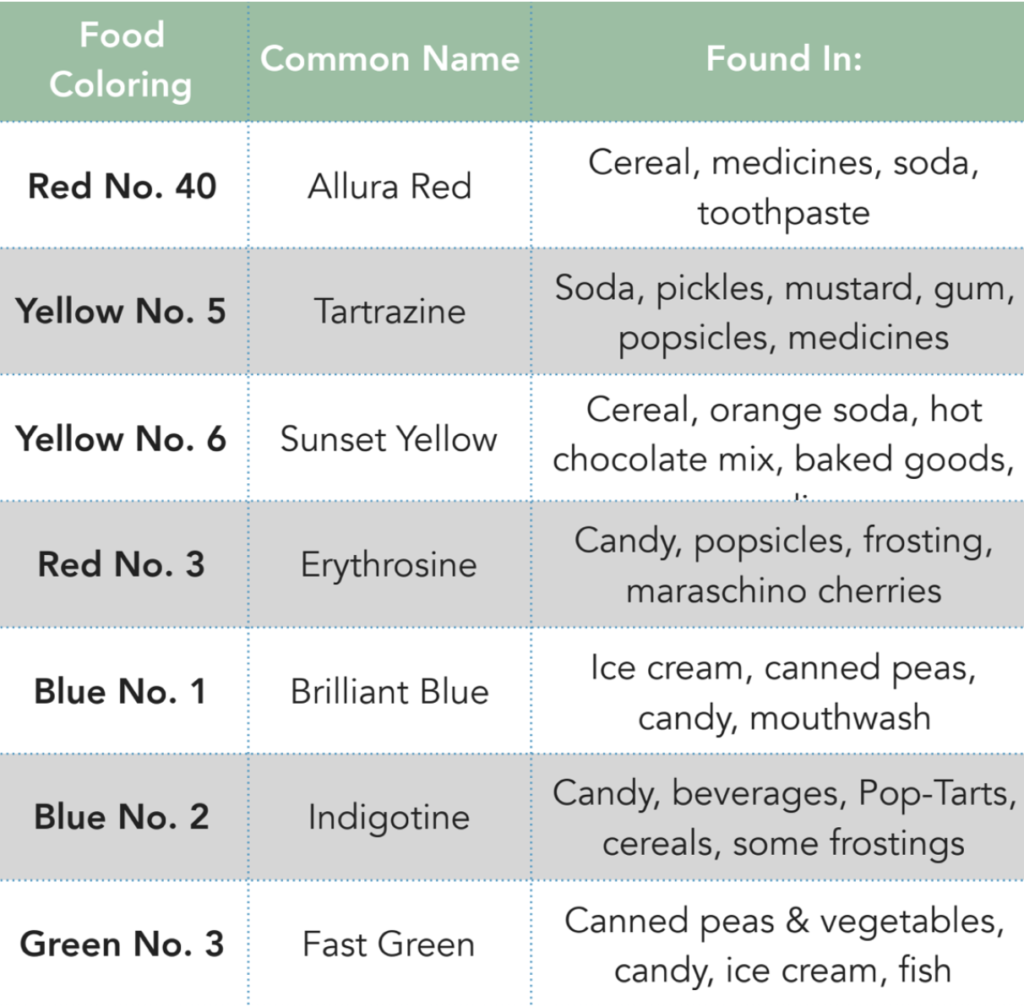
The aisles of grocery stores are lined with snacks and other goodies filled with hidden artificial colors. It’s ever so tempting to grab a box of Froot Loops as an easy breakfast for yourself or your kids. It’s important to remember that while these colors make our food bright and appealing, they can also be detrimental to our health in the long term.

The most common culprits are the petroleum based dyes known as Red #40, Yellow #5, and Yellow #6. These three synthetic dyes account for 90% of dyes used in food.F or example, Red #40 is used in chips like Doritos and soda such as Fanta. Really, artificial colors and food dyes are found in nearly everything you can imagine: soda, snack foods, salad dressings, ice cream, vitamins, toothpaste, and mouthwash. Even some cough syrups contain these dyes.
These dyes are potentially harmful for children. Studies published in medical journals such as The Lancet and The Journal of Pediatrics have shown these dyes can be linked to hyperactivity in children. Red #40, Yellow #5, and Yellow #6 may contain benzene as well, which is known to be a cancer causing agent.
You’re probably wondering: “If these artificial colors are in so many products, how can I possibly avoid them?” It actually just takes a couple extra seconds while shopping! Usually, these artificial colors are listed on the ingredient label so you can pick and choose which brands are the safest for you and your family.

Here’s my tips for avoiding artificial colors:
- Avoid products with colors followed by numbers on the label (this includes colors with a # symbol or a “No.”)
- Don’t be fooled by names like Allura Red, Tartrazine, or Sunset Yellow. These are just nicknames for the same dyes.
- Steer clear of brightly colored food and products. Opt for products colored with natural colorings using ingredients such as turmeric, beets, beta carotene, and saffron.
- Check this list for common food colorings and where to find them!

After going through this process a couple times, you’ll remember which brands opt out of using artificial colors and shopping will be a breeze again! Even if you just start by ditching one product, such as those brightly colored cereals, you can make a world of difference!
